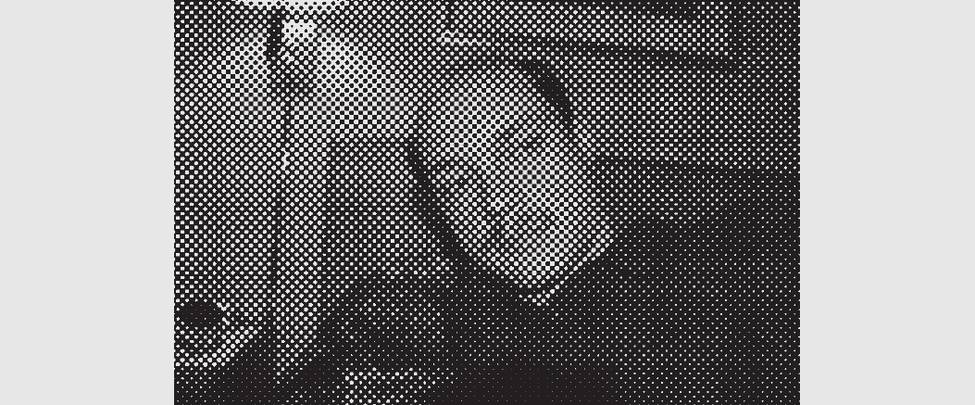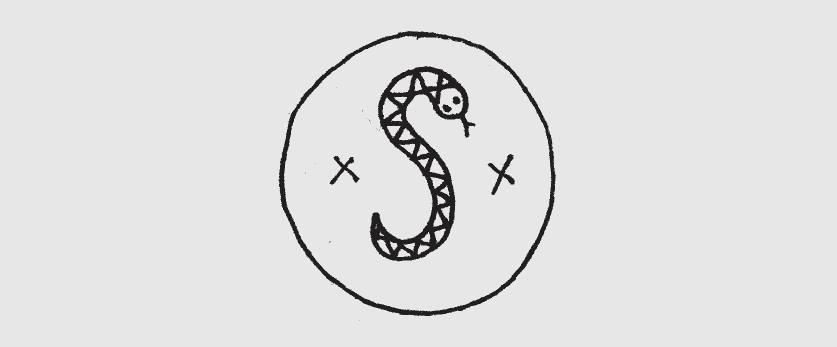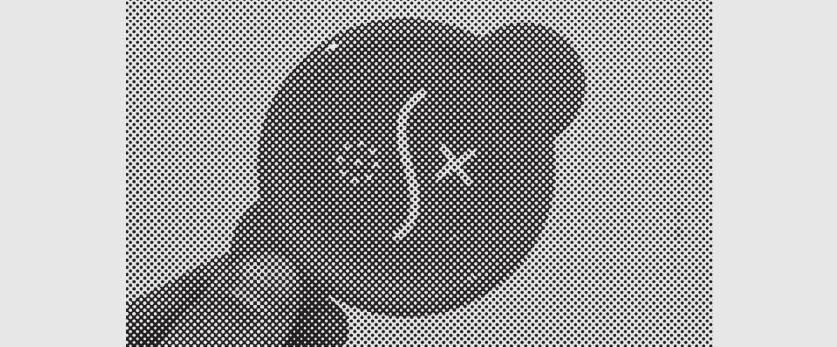Disappearance Reappearance 2
This article was first printed in The Silver Bulletin #2.

The above image is a ReCaptcha. You’ll recognise it if you have ever signed up to an e-mail account or joined facebook. The idea is that only a human can recognise the words, thus stopping spamming computers signing up and overloading the system. The top word is a word with a code attached, so when a human recognises it, the computer can verify the human as a valid user. The word on the right is one the computer can’t recognise—one it needs help with. The reason it needs help because it is building a library. Google Books has vowed to make available 15 million e-books within the next ten years. When books are scanned, words are automatically converted by Google’s Optical Character Recognition software into searchable text. Occasionally, there is a problem with this conversion process, and Google’s OCR software either can’t recognize some text or it isn’t confident about its conversion, having checked the results against standard grammar rules. The only way to convert these wayward words and phrases is to introduce human eyes into the system. This is where ReCAPTCHA comes in. Now, every test produces a human user confirmation and the digitization of an unknown word. ReCAPTCHA digitizes 45 million words a day, or about 4 million books a year. In addition to the words ReCAPTCHA digitizes for Google Books, ReCAPTCHA’s other significant source of unknown words comes from the digital archiving of the New York Times.1 No more scanning through archived newspapers at the library (what are those machines called?) All of this simply meaning that next time you search Google, there will be more results than the day before. More to be found, and easier than ever to find it.

This is Evan Ratcliff. Looking unlike his normal self and hoping that airport officials won’t look to closely at his ID. Ratcliff is a journalist, and he is trying to disappear. If you Google search ‘How to Disappear in America,’ the second result you get is a youtube link to a discussion held at the Walker Art Center between curator Peter Eleey and Ratcliff about this attempted disappearance. In 2009, as an extension of an article for Wired magazine, Ratcliff attempted to disappear in America for 30 days. The ground rules of the experiment were simple; Ratcliff would attempt to disappear (restricting his movements to within the U.S.A) and the public/wired magazine readership were invited to try and find him. They were issued with the typical information a federal agent might receive; credit card transactions, phone records etc. While Ratcliff attempted to stay hidden for 30 days, he was caught in 25, thanks to the digital bread crumb trail he left behind. One computer programmer who took up the challenge even managed to create a program that could pinpoint Ratcliff’s exact whereabouts through monitoring his use of facebook. During the Walker Art Center discussion Ratcliff pointed out just how significant the average persons digital footprint was - in essence; their traceability. For instance, if we were to rewind 30 years it would take authorities months to build up a substantial profile on a missing/wanted person—Their daily movements, likes, dislikes, friends, and buying habits. This exercise now requires the same officials to simply visit the subjects facebook ‘profile’ and there it is, all the information they need, laid out for them.
The reason Ratcliff was caught was because he created a new identity. He insisted that to really disappear was to start again, a new person with a new name and new bank cards and a new facebook page; to hide in plain sight as opposed to simply going to ground/off the grid — a tactic he acknowledged would have kept him hidden. The conclusion was that to really disappear in America, or anywhere for that matter, one must forfeit all forms of digital traceability — to unplug from a world that is increasingly centered around our ability to be online.
Which all made perfect sense. Until May 2, 2011 when Osama Bin Laden was found and killed while hiding in a compound deep within Pakistan. The interesting paradox here is that one of the reasons authorities began to focus on this particular compound was the distinct lack of internet or phone lines running into the property, an omission that was viewed as highly suspicious. In Bin Laden’s case it was the very act of going off the grid that ended up pointing to his location. In an article for The New York Times, ex intelligence operative Prof. Paul R. Pillar outlines some of the tactics Bin Laden used to stay at large:
‘...Especially when he was in Pakistan, (He relied on) the support and concealment offered by sympathetic local populations. Most important, it has involved discipline in simply not letting out any signals or signatures — visual, technical, or otherwise — that would be collectible by anyone not already in Bin Laden’s inner circle. And given the tests of trustworthiness that are required, penetration of such an inner circle is virtually impossible.’2
I guess we can draw a few conclusions here. It seems that if people want to find you, they eventually will, on or off the grid; even if going off the grid managed to keep Bin Laden hidden from an extraordinary amount of time considering how wanted he was.
Both instances — that of Ratcliff’s experiment and Bin Laden’s real life attempt can be seen as case studies in how to disappear and, in the process, the aesthetics of disappearance; how the subject must change both in appearance and movement, both in the real world and especially in the digital world; what it looks like to disappear. These case studies also work to outline the opposite - how to search for someone; the digital bread crumb; traceability. The more we know about what we are searching for, the more likely we are to find it, or, to turn things around; the more we know about those who are looking for us, the more likely we are to evade them. An example of this would be hackers communicating with each other through zines; publishing and sharing information and hacks — knowing that the printed object can’t be traced in the same way as information posted online.3 Or to go back a couple of thousand years; the story that early Christians avoided detection and death at the hands of the Romans by use of this sign:

The story goes that, when talking to a stranger and attempting to decipher whether they were friend or foe, a Christian would draw an arc in the sand. The stranger, if a non-believer would then either not notice it or think nothing of it. A fellow believer however would see the arc and reciprocate by drawing a second arc - completing the fish symbol and in doing so signifying that they were in good company. This functionality speaks of the wider success of the symbol; one of the most recognizable and easily reproduced symbols in the world, these days mainly in the form of a bumper sticker. It can also be reproduced in digital form: <><

Both the ability for a symbol to be easily recognizable and, more importantly in this case; easily reproduced, were at the front of my mind when I drew the above image. You might notice it from the front of this newspaper. Initially conceived for and subsequently rejected by a commercial client in 2010, I have taken to using it as my publishing imprint. In doing so this symbol acts as an identifier; it points back to the publishing label it represents; it’s an agent of traceability. I like that it could be drawn by anyone and drawn quickly; be identifiable even in its simplest form, like this even:

I’m interested in the idea of a symbol being a stand alone representation of something larger, that a name isn’t necessary, people see the image and they know what it means, it can be more distinctive than a bunch of letters can ever be. Letters are so traceable, carry so much data. You can’t Google an image. However, there is an inherent need for this symbol to be traceable, a publishing label needs a website and a website needs a name, it needs code. Which got me thinking, how would you Google this symbol? Imagine it as a ReCAPTCHA maybe... A computer might not be able to decode it, but what would a human make of it, how would they write it out in plain text? Until recently the only way I could think to do this was to enter ‘a circle with a snake flanked by two x’s in the middle’ but then I saw this:

This is one of my daughters bath-time toys, it’s one of a series of buckets with different shapes cut out of the bottom, each one creating a unique effect when water is poured through. To me, the resemblance to my symbol was uncanny, and the moment I saw it I read o S x — and in doing so realised that there was a much easier way to conduct a Google search for my symbol: OSXX — The hierarchical reading of the components from big O to little X’s. This is now the name of my publishing label, it was there all along, like a code embedded in the image, a code that can be googled and will lead to a website. It is a traceble artifact both in the physical and digital world. Like using facebook to understand more about a missing person in order to find them; what is searched for is what it is; it’s characteristics — O-S-X-X. Unique characteristics are identifiers, signals, signatures. Things that point to us and that make us easy to find. Things we can’t hope to erase, but things we can try and sweep under the rug; the aesthetics of disappearance. Like a symbol that can be googled if you can decipher the four letters that make up the symbol or someone deliberately drawing lines through text, making it hard for computers to read but remaining legible to humans. The more we know about what we are looking for, the more likely we are to find it. The more aware we are of our traceability, the more likely we are to stay hidden, or be found, whichever is preferable. George W. Bush knows what I’m talking about; In 2005, when asked why the United States had been unsuccessful in locating Osama bin Laden, he put it simply; “Because he’s hiding.”